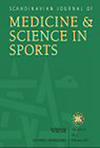破解自行车伟大纪念碑的胜利:前5名与前6-30名的表现分析
IF 3.5
2区 医学
Q1 SPORT SCIENCES
引用次数: 0
摘要
本研究旨在研究五大自行车古迹(米兰-圣雷莫、环法兰德斯、巴黎-鲁拜、利弗里奇-巴斯通-利弗里奇和伦巴第)中排名前5位的自行车手与排名第6至30位的自行车手之间的关键性能指标和耐久性差异。对64名职业男性自行车手的数据进行了分析。自行车运动员被分为前5名(n = 14)和前6-30名(n = 50)。从.fit文件中提取比赛数据,包括多个持续时间(5秒、30秒、1分钟、5分钟、10分钟和20分钟)的功率输出(PO)、平均最大功率(MMP),以及累积工作量(30、40、50和60 kJ kg−1)后的功率衰减。前5名完成者在5分钟内表现出更高的MMP (d = 0.7;P = 0.02), 10分钟(d = 0.8;P = 0.01), 20分钟的努力(d = 1.0;P = 0.01),与前6-30名选手相比。在较短的持续时间中没有发现显著差异(p >;0.05)。功率衰减分析显示,前6-30名自行车运动员在60 kJ kg - 1时MMP降低幅度更大,特别是在10分钟(d = 1.3;p & lt;0.01)和20分钟的努力(d = 1.2;p & lt;0.01)。两组之间的总能量消耗和在能量区停留的时间没有显著差异。前5名的选手比前6-30名的选手耐久性更高,能量衰减更少。这些发现强调了与前5名涂层相关的功能性能差异(例如,MMP,功率衰减),尽管生理机制仍然是推测性的。这项研究扩展了先前的研究,重点关注五大古迹中的精英终结者。本文章由计算机程序翻译,如有差异,请以英文原文为准。
Decoding Victory in Cycling's Grand Monuments: A Performance Analysis of Top‐5 Versus Top‐6–30 Finishers
This study aimed to examine the key performance metrics and durability differences between cyclists finishing in the top‐5 and those ranked between 6th and 30th in the Five Monuments of Cycling (Milan‐San Remo, Tour of Flanders, Paris‐Roubaix, Liège‐Bastogne‐Liège, and Il Lombardia). Data from 64 professional male cyclists were analyzed. Cyclists were categorized into top‐5 finishers (n = 14) and top‐6–30 finishers (n = 50). Race data were extracted from .fit files, including power output (PO), mean maximal power (MMP) across multiple durations (5 s, 30 s, 1 min, 5 min, 10 min, and 20 min), and power decay after accumulated workloads (30, 40, 50, and 60 kJ kg−1 ). Top‐5 finishers exhibited significantly higher MMP for 5‐min (d = 0.7; p = 0.02), 10‐min (d = 0.8; p = 0.01), and 20‐min efforts (d = 1.0; p = 0.01) compared to top‐6–30 finishers. No significant differences were found in shorter durations (p > 0.05). Power decay analysis revealed that top‐6–30 cyclists experienced greater reductions in MMP at 60 kJ kg−1 , particularly for 10‐min (d = 1.3; p < 0.01) and 20‐min efforts (d = 1.2; p < 0.01). No significant differences were observed in total energy expenditure or time spent in power zones between groups. Top‐5 finishers showed higher durability, with less power decay compared to top‐6–30 finishers in the Five Monuments. These findings highlight functional performance differences (e.g., MMP, power decay) associated with top‐5 finishes, though physiological mechanisms remain speculative. This study extends prior research by focusing on elite finishers in the Five Monuments.
求助全文
通过发布文献求助,成功后即可免费获取论文全文。
去求助
来源期刊
CiteScore
7.90
自引率
4.90%
发文量
162
审稿时长
3 months
期刊介绍:
The Scandinavian Journal of Medicine & Science in Sports is a multidisciplinary journal published 12 times per year under the auspices of the Scandinavian Foundation of Medicine and Science in Sports.
It aims to publish high quality and impactful articles in the fields of orthopaedics, rehabilitation and sports medicine, exercise physiology and biochemistry, biomechanics and motor control, health and disease relating to sport, exercise and physical activity, as well as on the social and behavioural aspects of sport and exercise.

 求助内容:
求助内容: 应助结果提醒方式:
应助结果提醒方式:


